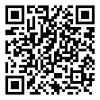技術(shù)文獻(xiàn)
相關(guān)資訊
技術(shù)文獻(xiàn)
Preparation before the experiment of the image sample of the bovine lactoferrin ELISA detection kit: ELISA kit liquid samples: including serum, plasma, urine, pleural and ascitic fluid, cerebrospinal
Preparation before the experiment of the image sample of the bovine lactoferrin ELISA detection kit:
ELISA kit liquid samples: including serum, plasma, urine, pleural and ascitic fluid, cerebrospinal fluid, cell culture supernatant, etc.
(1) Serum
After natural coagulation of blood at room temperature for 10-20 minutes, centrifuge for about 20 minutes (2000-3000 rpm). Carefully collect the supernatant. If precipitation forms during storage, it should be centrifuged again.
(2) Plasma:
EDTA, sodium citrate, or heparin should be selected as anticoagulants according to the requirements of the specimen. After mixing for 10-20 minutes, centrifuge for about 20 minutes (2000-3000 rpm). Carefully collect the supernatant. If precipitation forms during storage, it should be centrifuged again.
(3) Urine:
Collect using sterile tubes. Centrifuge for about 20 minutes (2000-3000 rpm). Carefully collect the supernatant. If precipitation forms during storage, it should be centrifuged again. Thoracic and abdominal fluids, as well as cerebrospinal fluid, shall be treated accordingly.
A commercial enzyme-linked immunosorbent assay
(ELISA) assay kit was purchased from Shanghai YSRIBIO
Industrial Co., Ltd. (Shanghai, China).
(4) Cell culture supernatant:
When detecting secretory components, collect them using sterile tubes. Centrifuge for about 20 minutes (2000-3000 rpm). Carefully collect the supernatant.
(5) Cultivate cells
When detecting intracellular components, dilute the cell suspension with PBS (pH 7.2-7.4) to a concentration of approximately 1 million/ml. By repeatedly freezing and thawing or adding tissue protein extraction reagents, cells are destroyed and intracellular components are released. Centrifuge for about 20 minutes (2000-3000 rpm). Carefully collect the supernatant. If precipitation forms during storage, it should be centrifuged again.
(6) Tissue specimen
After cutting the specimen, weigh it. Add a certain amount of PBS with a pH of 7.4. Quickly freeze and store in liquid nitrogen for later use. The specimen remains at a temperature of 2-8 ℃ even after melting. Add a certain amount of PBS (PH7.4) or tissue protein extraction reagent, and homogenize the sample manually or in a homogenizer. Centrifuge for about 20 minutes (2000-3000 rpm). Carefully collect the supernatant. After packaging, one portion is to be tested
ELISA kit liquid samples: including serum, plasma, urine, pleural and ascitic fluid, cerebrospinal fluid, cell culture supernatant, etc.
(1) Serum
After natural coagulation of blood at room temperature for 10-20 minutes, centrifuge for about 20 minutes (2000-3000 rpm). Carefully collect the supernatant. If precipitation forms during storage, it should be centrifuged again.
(2) Plasma:
EDTA, sodium citrate, or heparin should be selected as anticoagulants according to the requirements of the specimen. After mixing for 10-20 minutes, centrifuge for about 20 minutes (2000-3000 rpm). Carefully collect the supernatant. If precipitation forms during storage, it should be centrifuged again.
(3) Urine:
Collect using sterile tubes. Centrifuge for about 20 minutes (2000-3000 rpm). Carefully collect the supernatant. If precipitation forms during storage, it should be centrifuged again. Thoracic and abdominal fluids, as well as cerebrospinal fluid, shall be treated accordingly.
A commercial enzyme-linked immunosorbent assay
(ELISA) assay kit was purchased from Shanghai YSRIBIO
Industrial Co., Ltd. (Shanghai, China).
(4) Cell culture supernatant:
When detecting secretory components, collect them using sterile tubes. Centrifuge for about 20 minutes (2000-3000 rpm). Carefully collect the supernatant.
(5) Cultivate cells
When detecting intracellular components, dilute the cell suspension with PBS (pH 7.2-7.4) to a concentration of approximately 1 million/ml. By repeatedly freezing and thawing or adding tissue protein extraction reagents, cells are destroyed and intracellular components are released. Centrifuge for about 20 minutes (2000-3000 rpm). Carefully collect the supernatant. If precipitation forms during storage, it should be centrifuged again.
(6) Tissue specimen
After cutting the specimen, weigh it. Add a certain amount of PBS with a pH of 7.4. Quickly freeze and store in liquid nitrogen for later use. The specimen remains at a temperature of 2-8 ℃ even after melting. Add a certain amount of PBS (PH7.4) or tissue protein extraction reagent, and homogenize the sample manually or in a homogenizer. Centrifuge for about 20 minutes (2000-3000 rpm). Carefully collect the supernatant. After packaging, one portion is to be tested

